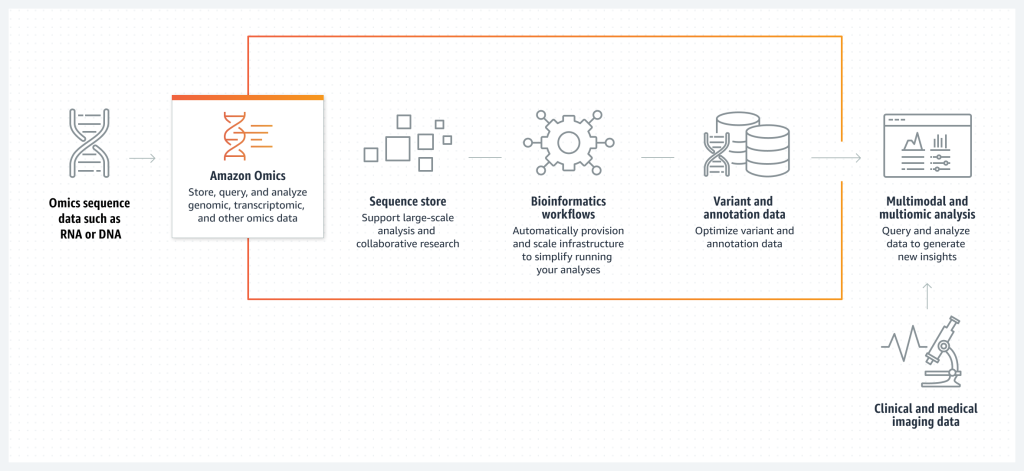

Source: Altexsoft
From predictive biomarkers identification to personalized treatment strategies to accelerated drug development, multi-omics datasets hold great potential in powering discovery across multiple areas. However, extracting insights from the swelling treasure troves of multi-omics data that can be in the order of petabytes is difficult and requires immense amounts of computing power. In addition, ensuring privacy and security of this data can also be an uphill battle. And that’s where Amazon Omics can help.


